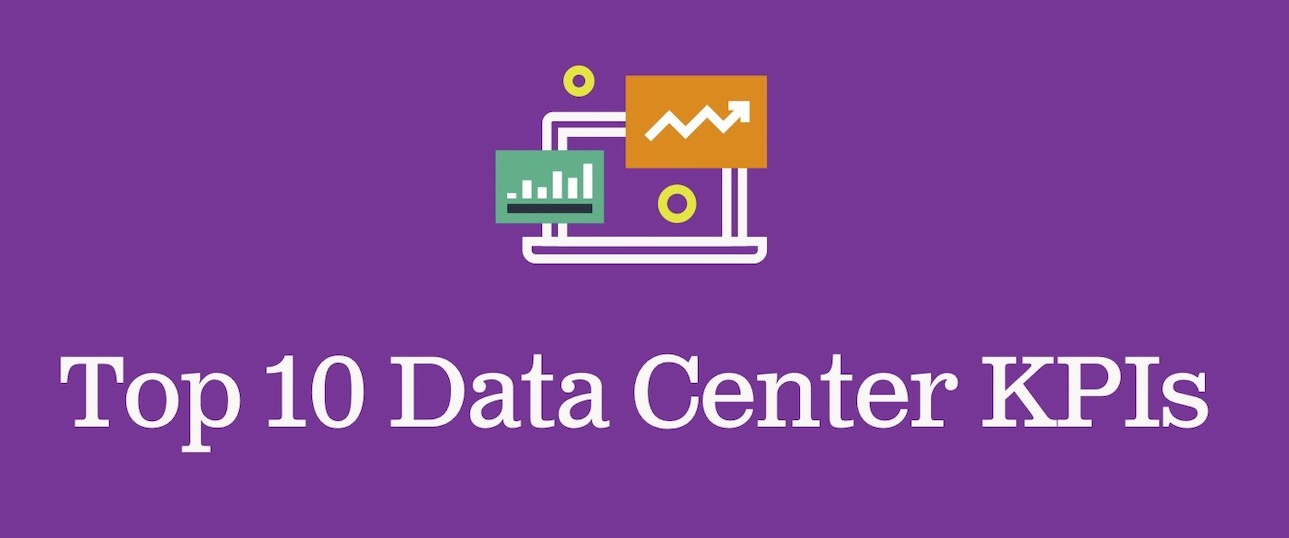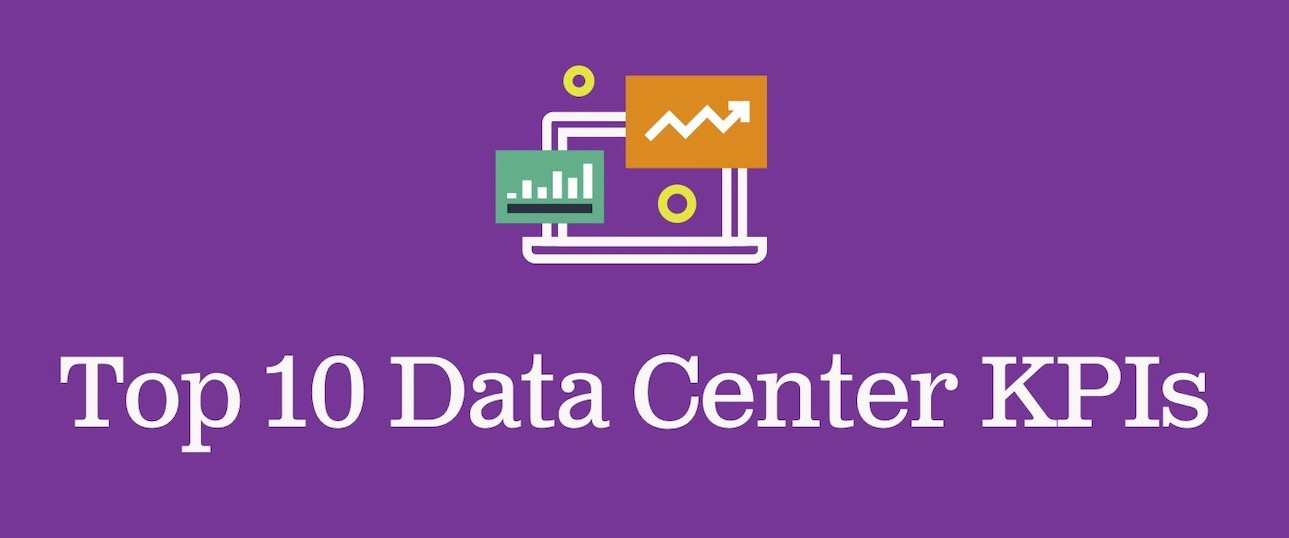


Top 10 Data Center KPIs
No one understands the importance of data more than a data center manager! Key Performance Indicators (KPIs) help data center managers monitor their most important parameters and strategically use data to define data center best practices. Identifying and monitoring KPIs is essential for ensuring operational efficiency and maintaining the overall health of a data center.
Whether you are unsure of what data center KPIs you should be tracking, or if you want to be certain you are already monitoring the most important metrics, this list of the Top 10 Data Center KPIs will provide a solid foundation to help achieve optimal efficiency and overall health in your data center.
Available Capacity by Key Resource (Space, Power, Cooling, and Power/Network Port Connections)
Having accurate, reliable, real-time information on the physical space, power, cooling, and network connectivity capacity in your data center is essential for making the most informed, data-driven decisions when you need to reserve space and deploy new IT equipment, use power resources more efficiently, save on operating expenses, or convince management you need more capacity. Being able to monitor real time capacity at the site, floor, and cabinet levels greatly simplifies how you can find and reserve resources.
Did You Know?
Conducting what-if analysis in a Data Center Infrastructure Management (DCIM) solution allows you to understand the potential net impact of planned changes in your data center and determine if more resources are required.
Data Center Energy Cost
Since data center energy costs can account for 50% of total data center operating expenses, keeping track of the monetary cost of energy consumed is a must. Energy prices can be unpredictable as they are dependent on weather, storage, and other market conditions. As such, set targets to reduce your energy consumption relative to your data center, stay within your budget, and meet energy efficiency goals.
Did You Know?
Data centers in the United States account for more than 2% of all electricity use. If they were 20% more efficient, it would only take several years to reach $2 billion in savings nationwide.
Change Requests by User, Stage, and Type
As data center operations continues to grow more complex, the need for simple and efficient management of moves, adds, and changes increases for server and network equipment. Data center managers need to know not just the number of changes in their environments, but who is making them, what progress is being made, and what types of changes are being requested. Monitor and manage your requests from creation to approval to ensure work order quality and to reduce workflow delays.
Did You Know?
“High-performing” IT organizations have change success rates over 99%, spend less than 5% of time on unplanned work, and have server to system administrator ratios greater than 100:1.
Available Cabinet and Floor Space Remaining
Intelligent space capacity planning is necessary for the expansion and optimization of data centers. Tracking available cabinet space by the amount of open rack units, including contiguous rack units, gives you insight into how efficient your use of space is and how much capacity for new devices you have. Tracking remaining floor space by the number of open cabinet positions lets you know your room for expansion by how many new cabinets you can deploy on your data center floor. For a more accurate view of remaining space, include planned decommissions and deployments in your reporting.
Did You Know?
A single cabinet can consume up to 42 square feet of floor space after accounting for hot and cold aisles, access corridors, and power and cooling systems.
Cabinets with Most Free Data Ports and Power Ports
When provisioning new equipment, you should know the best place to reserve cabinet space for optimal utilization of cabinet resources. Make the most of your physical network and power port capacity by identifying the cabinets in your data center with the most available ports where you can intelligently deploy devices. Identify your cabinets with the most free ports to help make more informed capacity planning decisions, use power resources more efficiently, and save on operating expenses.
Did You Know?
With a comprehensive Data Center Infrastructure Management (DCIM) solution, you can find the optimal cabinet to deploy IT equipment in mere seconds.
Peak Load Per Cabinet Over Last 30 Days
Data center power resources are increasingly constrained, and the cost of energy will continue to rise over time. You need to know how much power you are using, how much is available, and where you can improve efficiency. Measure active power from rack PDU inlet readings over time and set warning and critical alert thresholds for loads on a cabinet-by-cabinet basis so that you are immediately notified and able to react before service is impacted. Not only will you improve uptime, but you will also find cabinets with stranded power capacity.
Did You Know?
Data center density is a metric defined by kW per cabinet. High-density data centers, where each cabinet consumes more than 10kW, have much lower operational costs due to increased efficiency.
Cabinet Power Failover Redundancy Compliance
Cabinets in modern data centers are densely packed with power-hungry hardware, and data center teams are under pressure to deliver increasing amounts of power to these devices. It is more important than ever to have a power redundancy solution to ensure that power is always available to IT equipment to minimize downtime. Track your cabinet power failover redundancy with the goal of achieving 100% compliance in your data center.
Did You Know?
33% of survey respondents claimed that power outages were the number one cause of downtime and 80% said their most recent outage was preventable.
Power Usage Effectiveness (PUE)
PUE is a metric developed by The Green Grid Association that describes how efficiently a data center uses energy. It is a ratio of the total amount of energy used by a facility to the energy delivered to IT devices. Your target PUE should be less than or equal to 1.5, or 1.4 for new data centers. PUE is the most commonly used KPI for reporting energy efficiency of a data center facility due to the benefits of tracking PUE over time to see efficiency changes historically or by events such as seasonal changes.
Did You Know?
Google’s data centers are among the most efficient in the world, with an average PUE of 1.11.
Cabinets Compliant with ASHRAE Temperature and Humidity Standards
The American Society of Heating, Refrigerating and Air-Conditioning Engineers (ASHRAE) recommends that the temperature near the inlet of servers should range between 65°F to 80°F and that the relative humidity should be between 40% and 60%. To maximize energy efficiency and ensure optimal conditions for your IT equipment, you should identify hot spots, overcooling, and extreme humidity levels with environmental sensors. Track the percentage of cabinets in your data center that are compliant with ASHRAE standards with a goal of reaching 100%.
Did You Know?
Bank of New York Mellon reduced cooling costs by raising the temperature of their supply air from 72°F to 78°F which allowed them to increase their chilled water temperature from 44°F to 47°F.
Hot Spots Occurrence and Duration
Hot spots are locations at the intake of IT equipment where the measured temperature exceeds the recommended range due to insufficient cooling. They pose a threat to equipment, increase outages, and waste energy. All data center managers should proactively monitor the temperatures in their environment and aim to minimize the occurrence, size, and duration of all service-impacting hot spots.
Did You Know?
Implementing hot and cold aisle containment can help save up to 40% on cooling costs and provide return-on-investment in as fast as one year.
Data centers need to become completely data-driven to increase the efficiency of capacity, energy and space utilization. In doing so, KPIs have become more critical than ever before in enabling data center professionals to make the right decisions at the right time.
Want More? Download the Top 40 KPIs eBook!
To better help you monitor the most important aspects of your data center and make the most informed decisions, Sunbird created an eBook on the Top 40 Data Center KPIs. Download the eBook now!
Sources
https://www.missioncriticalmagazine.com/ext/resources/whitepapers/AutomatedChangeManagement.pdf
https://uptimeinstitute.com/data-center-outages-are-common-costly-and-preventable
https://www.energy.gov/eere/articles/10-facts-know-about-data-centers
https://www.enelgreenpower.com/stories/a/2019/06/facebook-papillion-data-center-renewable-energy
https://www.sunbirddcim.com/product/data-center-capacity-management
https://datacenterfrontier.com/using-what-if-analysis-address-data-center-capacity/
https://www.intermedia.net/it-challenges/cost/costs-datacenter-space
https://www.google.com/about/datacenters/efficiency/internal/




























